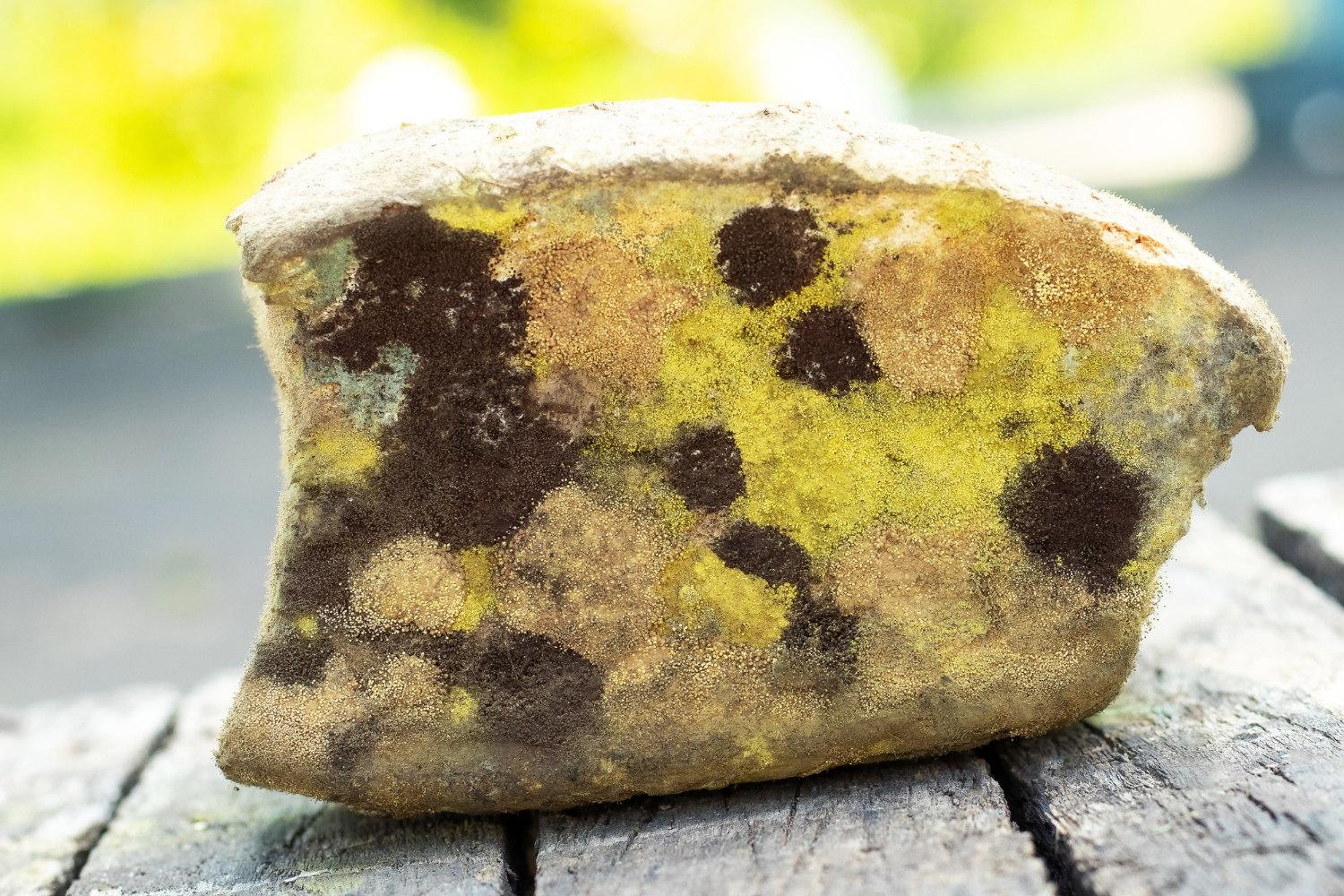To grow and thrive, bread molds require a food source. Mold is a fungus that needs the resources of other living organisms to flourish because it does not make its very own food as plants do. The components in bread provide a food supply for the growth of bread molds.
We are continually exposed to the most common spores since they are pervasive in our environment. Diseases caused by common molds, on the other hand, are pretty rare and are rarely found in people with properly functioning immune systems.
Molds require carbon atoms to prosper. Hence anything and everything that includes carbon atoms are essential.
Bread mold, like all living organisms, requires water to develop and survive. At the cellular level, the bread mold requires water in most of its chemical processes. Water, for example, is necessary for bread molds to keep alive, as specific functions can only take place in the cytoplasm, a wet environment.
The watery character of this environment aids in the mixing process and transportation of the nutrients in the bread mold; consequently, the existence of water aids bread mold formation. Furthermore, bread molds require moisture to avoid drying up when exposed to heat or sunlight.
How Does Temperature Affect Bread Mold Growth?
Warm temperatures promote optimal mold growth because enzymes, or proteins that control chemical reactions, work more efficiently when higher than lower temperatures. It molds at a temperature of around 26.7°C (80°F) to grow and thrive in. Refrigerated bread will slow mold growth, whereas frozen bread will prevent mold from forming at all.
What Causes Bread to Mold Fast?
Mold growth necessitates the following four conditions:
- Mold spores that are presently available
- Readily available mold food
- Suitable temperatures
- A significant amount of moisture
Mold will struggle to develop if any of these conditions are effectively mitigated.
Mold spores are tiny – they’re smaller than human hair. Mold spores are also found almost anywhere. There is no logical, dependable, or cost-effective way to remove them from human-inhabited surroundings. As a result, attempting to inhibit mold growth by eliminating mold spores is not a viable option.
Practically any carbon-based substance (organic substance) will give enough nutrients for mold to develop.
Even your skin’s oil, which is left behind when you contact an otherwise unsuitable surface, such as stainless steel, or the soap residue left behind after a thorough cleaning, will supply enough nutrients to sustain the growth of some molds. In addition, many common household materials, such as wood, paper, and organic fibers, are among the most popular mold nutrition.
As a result, removing mold food from any human environment is undoubtedly a near-impossible operation.
Unfortunately, the majority of common molds thrive at temperatures similar to those preferred by humans. Furthermore, anyone who has cleaned out their refrigerator knows that temperatures near freezing are insufficient to prevent mold growth, and temperatures considerably warmer than people desire, such as those found in the tropics, will produce large amounts of mold. As a result, controlling mold growth in residential environs through the careful regulation of the temperature of the surroundings is not feasible nor technically possible.
For most molds to flourish, there must be a lot of moisture present. The word “substantial” is crucial. When discussing the necessary circumstances for mold growth, mycologists (fungi scientists) use the term “water activity.” Molds require differing levels of water activity depending on their species. The relative amount of moisture in the air would have to match the equilibrium moisture level of the mold species present. This is called “water activity.”
The great majority of mold species thrive in moisture levels equivalent to 70% humidity. Therefore, the vast majority of significant, large-scale mold outbreaks inside buildings occur when porous, cellulose-type materials are rendered almost always moist by the surrounding humidity or by direct contact with water.
Most people prefer humidity levels below the crucial moisture levels for mold formation. As a result, out of the four essential criteria for mold growth, moisture availability is by far the easiest to control in human-friendly surroundings.
As you’ll see throughout the rest of this guide and the majority of the mold management literature, the agreement on effective mold control tactics is a combination of limiting moisture availability, which should logically result in the removal of active mold colonies.
How Do You Store Bread So It Doesn’t Mold?
Keeping bread fresh is an arduous effort for everyone, but it is especially difficult for tiny homes and those who live in hot, humid areas. The simplest way to avoid mold and savor every crumb of bread is to learn how to store it properly.
The best option is freezing bread. This is because all mold growth stops in the presence of a freezer.
- Cut the bread into slices or sections. It’s tough to cut through a frozen loaf, but you won’t have to thaw the entire loaf every time you need it.
- Wrap the bread tightly with plastic wrap. Wrapping the loaf in the wax paper is excellent in keeping the natural moisture of the bread. It also helps against freezer burn. If you’re using soft bread, put wax paper between the slices to keep them from getting stuck to each other.
- When you’re ready, place the loaf in an airtight freezer bag. Fold the bag around the loaf as you close it after each use to remove as much air in the container air as possible. The bread should stay fresh for half a year.
- If you want to consume your frozen bread, you need to thaw it first. Allow portions to defrost on some wax paper or foil before proceeding to toast the bread. The wax paper will help remove some moisture that may have migrated from the wrapping material to the bread. In addition, thawing helps in providing a more desirable texture and flavor in the bread.

